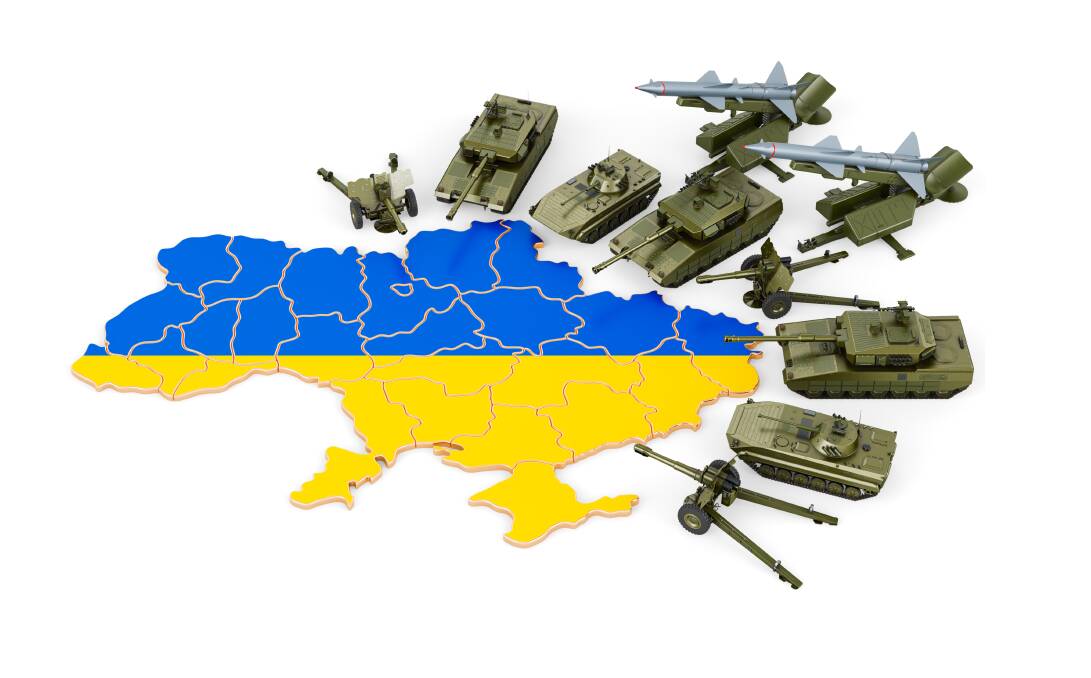
Rounds don't fly without supply.
It's an old military saying to remind everyone that transport and logistics play a crucial role in keeping a defence force operating.
It's also probably worth noting that a transport corps often includes many women as drivers for instance, and those drivers can definitely come close to being full-on combatants. They are certainly targets for the enemy attempting to cut off supplies.
This supply and resupply of needed items big and small are just as vital for any military operation - including defence, not just invasion - as they are to any business that makes or sells any product of any kind.
However, in military terms, we can look at this from many angles, but let's pick three.
One of these is getting your military forces to the conflict zone in the first place (whether it is to attack or to defend).
Secondly, once there (and that location can move around) there needs to be an ability to get things to the front lines where they are going to be used or consumed.
And third, when you ask friendly nations to supply you with things like weapons, is the ability of your forces to actually be able to use them once those items get there.
So, if we look at Russia's large-scale invasion of Ukraine from late February 2022 onwards, the transport and supply chains for both the belligerents and the defending forces have shown some weaknesses.
The first action most people noticed was Russia using tanks and other armoured vehicles to mobilise their forces. There really wasn't any marching from a transport point of view. However, this definitely still slowed them down, with miles and miles of tanks queued up on the road ready to storm the capital of Kyiv for instance.
Apart from limiting the flow rate of vehicles (just as it does for regular traffic) this also had the consequence of some vehicles running out of fuel (tanks are thirsty beasts, and the transport trucks for fuel are obvious targets). So Russia's initial attack was chaotic and relatively ineffective (militarily speaking; the ongoing humanitarian crisis is epic).
Although, that really was their only way in, as demonstrated by some vehicles that attempted to go cross country (sometimes just to try and destroy crop fields and possibly lay some mines in them) got bogged and abandoned. That included tanks and other off-roaders, at least one of which was a surface-to-air missile launcher.
It also appears that the road network in Ukraine is both an advantage and a disadvantage to the defending forces. The advantage was it slowed the enemy. The disadvantage is it slows the movements of Ukrainian supplies too, and the country is about 320km across.
The Black Sea is basically under blockade so that means land transport only. Railways started being subject to attack, and so have some road bridges.
In fact, at least one bridge was brought down by Ukraine themselves to slow the Russian advance on Kyiv. This has its drawbacks like seriously slowing civilians escaping the horrors of war, but it's also quite a normal military tactic, and since Kyiv didn't fall to the Russians in the first few days as seemed to be the plan, we have to say that it worked.
The friendly (mostly NATO) nations supplying some of the requested weapons have to approach from the west, while the main action soon became more focussed to the east before it spread along the south. So transport remains a challenge.
Then there's being able to use it.
Heavier stuff though, is a bit more complicated. Helpfully, Ukraine and several of their friendly former-Soviet neighbours, still have various Soviet-era equipment, vehicles and weapon systems. That is an advantage, because it means the Ukrainian forces (at least the members of each relevant corps) have already been trained to operate, maintain and repair them.
The downside is the supply is finite (and only dribbling through compared to what Ukraine's President Volodymyr Zelenskyy has been asking for), and so as NATO-specification heavy weapon systems start being sent, at least some training is required.

